OPPO Find N vs Samsung Galaxy Z Fold3: flagship foldable phones compared | 91mobiles.com
When you think of a foldable, chances are Samsung’s Galaxy Z Fold range of devices come to mind. Admittedly, the Korean giant is the king of the hill as far as foldable smartphones are concerned. That said, while the company’s offerings are truly spectacular, the brand’s foothold in the category can be accredited to the lack of options in the segment as well.
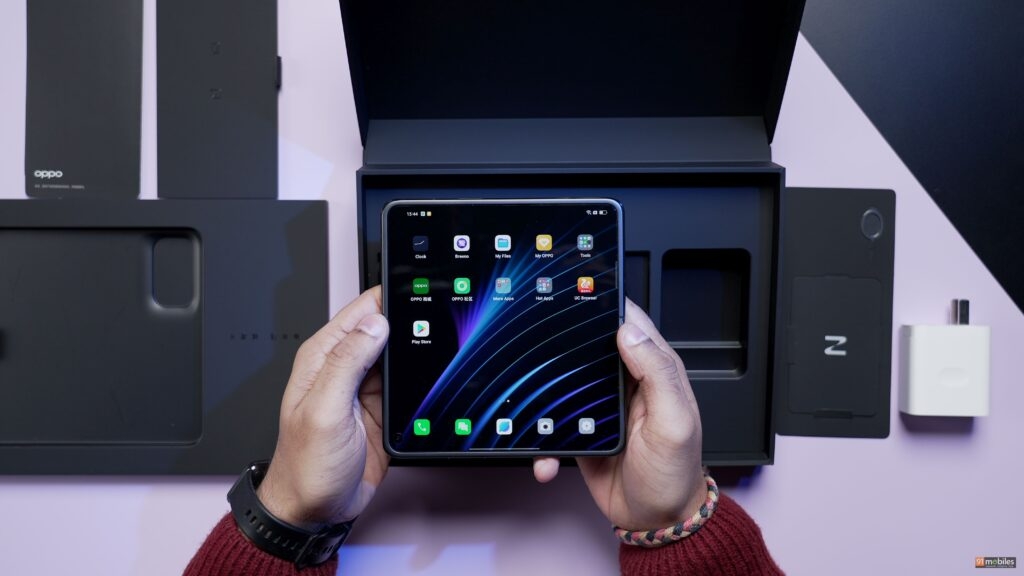
Enter OPPO, which hopes to challenge Samsung’s monopoly with a foldable of its own. Dubbed the Find N, the company’s first foldable is loaded to the brim with high-end specs. The icing on the cake is that the device has been priced rather attractively too (at least in its home market in China) and the smartphone undercuts its closest rival, the Galaxy Z Fold 3 (review) by quite a margin. Of course, it remains to be seen whether the company will launch the device globally, or not. Nevertheless, I managed to get my hands on a unit so let’s take a closer look at two of the most innovative devices in the market – the OPPO Find N and the Galaxy Z Fold 3 – and see what sets them apart.
Design
There’s not much that sets the two foldables apart in the design department. Both the devices open up like a book and offer users a bigger, inner display for all their media consumption and productivity needs. That said, the smartphones also ship with an outer display, aka, a cover screen, which can be used to perform routine tasks that don’t necessarily require a larger canvas. Now, both the phones look otherworldly and they are equally stunning in their own right. The best part is that the devices employ premium materials for their construction, so the foldables don’t just look the part of a luxurious product but come toting a fantastic in-hand feel too. To that note, both the phones make use of a metallic hinge and frame which holds the folding facets together. The back, as well as the front of the Z Fold3 and the Find N are layered with Corning’s Gorilla Glass Victus, ensuring the phones can stand the test of time too.
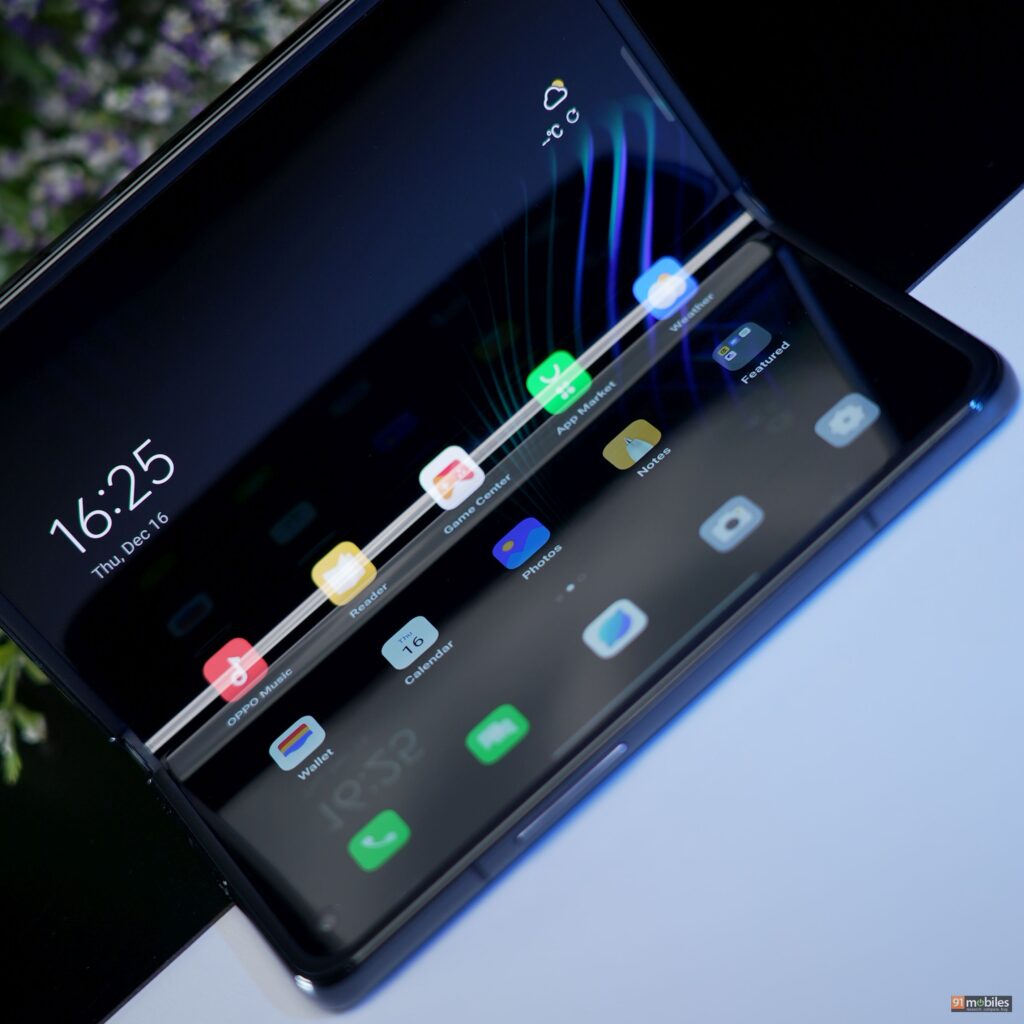
Unsurprisingly, both the Z Fold 3 and the Find N are heavier and chunkier than your run of the mill smartphones. In fact, at 271g and 275g respectively, you’ll undoubtedly feel the heft when using the foldables day in and day out. With that said, the OPPO Find N is much more compact and unlike the Z Fold 3, offers a smaller 5.45-inch cover screen with an 18:9 aspect ratio. On the flip side, the Z Fold 3 ships with a 6.2-inch outer panel with a taller aspect ratio. During my stint with the phones, I found Samsung’s offering a tad unwieldy to use. Take texting, for instance and here, the phone’s narrower-than-usual cover screen made it quite difficult to type quickly. The Find N, on the other hand, offered a more spaced-out keyboard deck thanks to its wider frame. That’s not all, as I found myself needing to readjust my grip to reach the apps positioned towards the top half of the Fold 3’s screen too. Simply put, the Find N’s condensed form factor makes the device a more functional daily driver.
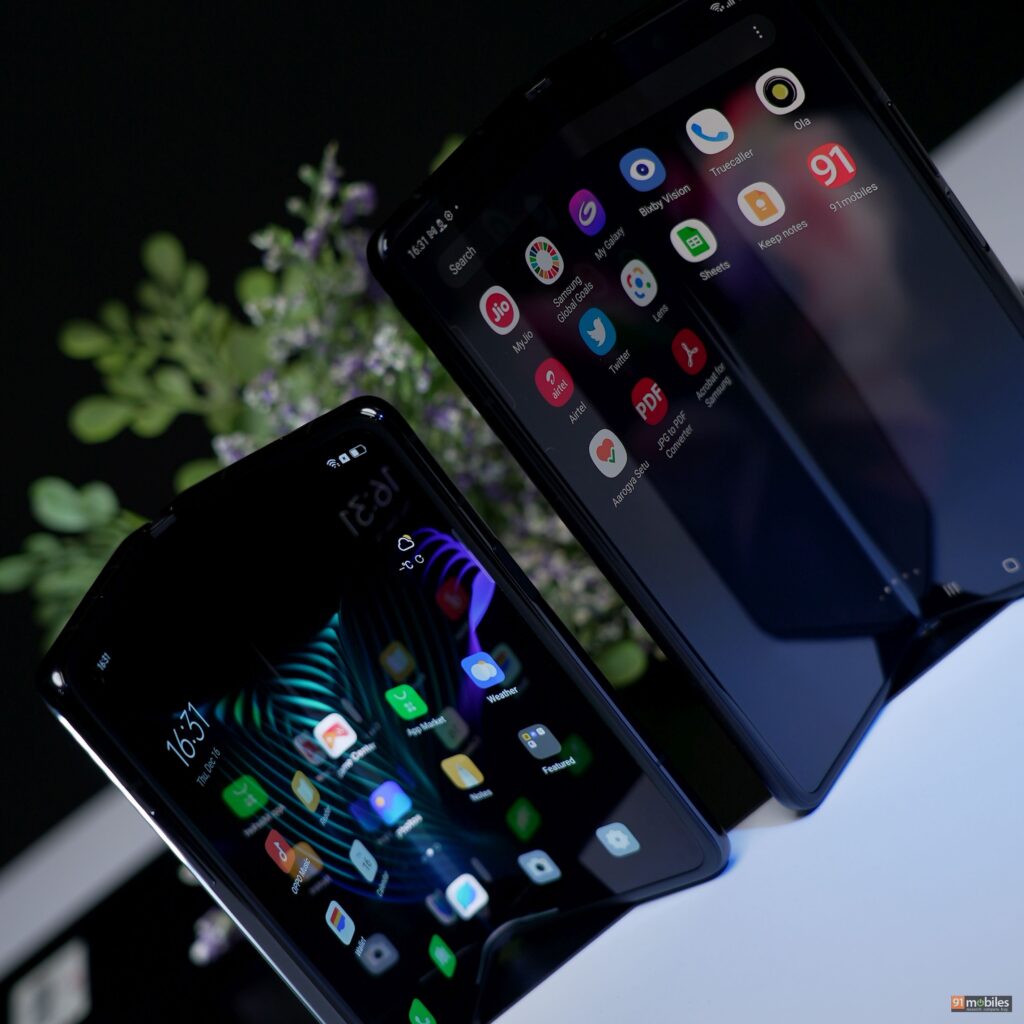
The Galaxy Z Fold 3 does have an ace up its sleeve and the device comes with IPX8 certification. Consequently, unlike the Find N, the smartphone is much more durable and will live to see another day on the off chance you drop it in a pool. As for the I/O, both the phones offer the same set of ports and feature a power button on their right-hand spine which also houses their capacitive fingerprint sensors. The duo also ships with a dual-speaker setup and I found the audio output from the two devices on par with each other. Much to my dismay, the phones don’t come equipped with a 3.5mm headphone jack.
Now, credit where credit’s due, the Find N’s flexion hinge feels oddly satisfying and it offers unvarying friction when you unfold the device. It also helps that the hinge mechanism snaps the device completely shut. So, unlike the Galaxy Z Fold 3, the Find N’s inner display doesn’t collect any dust.
Display
The Find N’s display is a testament to the age-old saying – don’t judge a book by its cover. Spec-wise, the Fold3’s main screen is more pixel-dense than what you’d get with the Find N. To that note, Samsung’s offering features a 7.4-inch, 2K, Dynamic AMOLED panel that can refresh at 120Hz. In contrast, the Find N touts a 7.1-inch, FHD+ AMOLED screen that too can refresh at 120Hz. That said, while the screen on the Fold3 is sharper, the Find N’s display feels much nicer to the touch. I say this because, by some hardware wizardry, the crease on the Find N’s folding screen is almost imperceptible. On the flip side, the Z Fold3’s display is marred by a noticeable groove that takes away from using the phone’s otherwise punchy, higher-res screen.
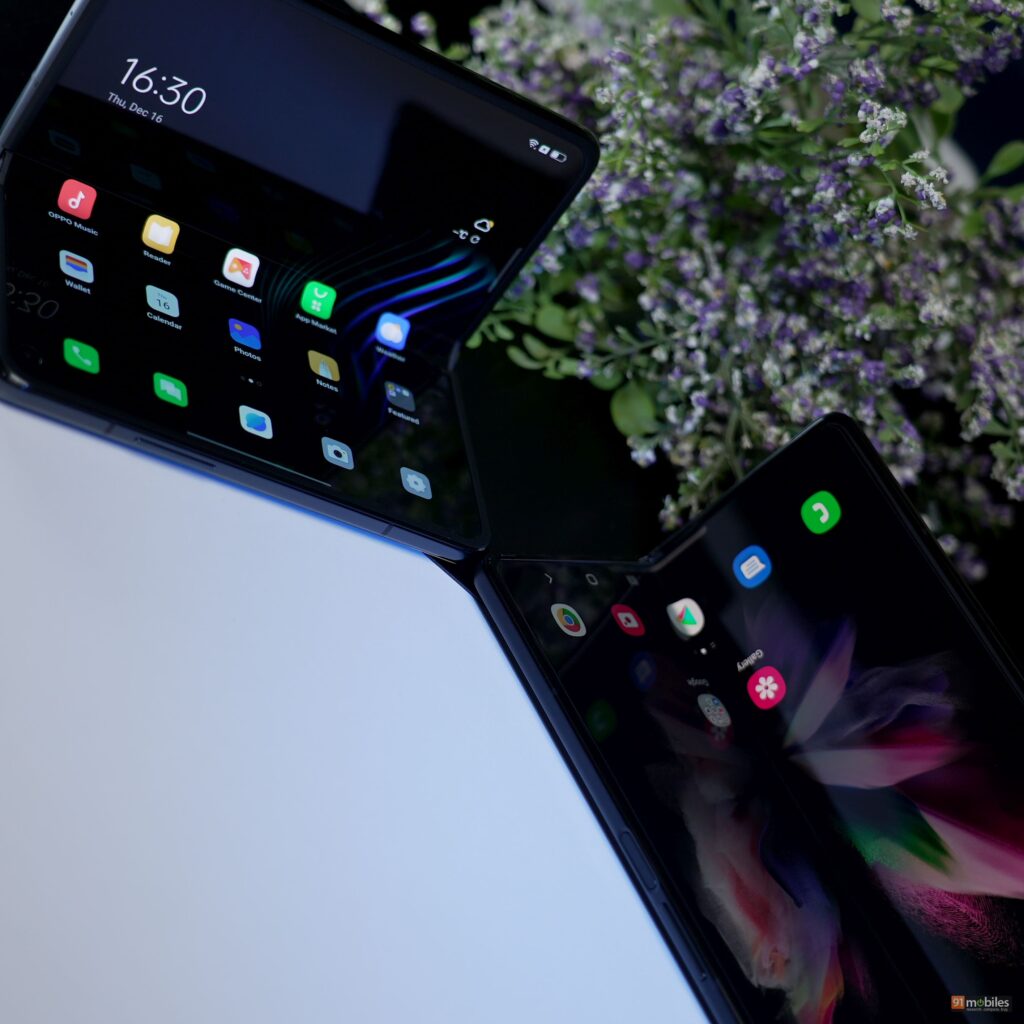
Quite frankly, the Find N’s folding screen surpassed my expectations. You see, having used the Fold3 at the time of its launch, I was expecting a prominent display crease on the Find N too. On the contrary, the panel appears like something you’d find on a conventional smartphone. What’s more, despite not packing in as many pixels, the 7.1-inch panel on the Find N is neck and neck to its Fold3 counterpart. To wit, both the screens offer an adaptive refresh rate and can smartly variate the display Hz to best fit the content on the screen. Moreover, at 1,000 nits, the Find N’s panel is about as bright as the 1,200 nits screen on the Fold3 too. With that said, the outer or cover display on the Fold3 is a tad nicer, primarily because it too offers a 120Hz adaptive refresh rate. The Find N’s outer screen, albeit more practical and ergonomic, is capped at 60Hz.
Cameras
Camera-wise, the OPPO Find N ships with a 50MP Sony IMX766 main sensor which works in tandem with a 16MP ultrawide sensor and a 13MP telephoto shooter. For selfies, the device offers a pair of 32MP sensors for the inner and the outer displays respectively. The Galaxy Z Fold3, on the other hand, makes use of a trio of 12MP sensors on the back, comprising a main, an ultra-wide, and a telephoto snapper. For selfies, the device gets a pair of 4MP and 10MP sensors.
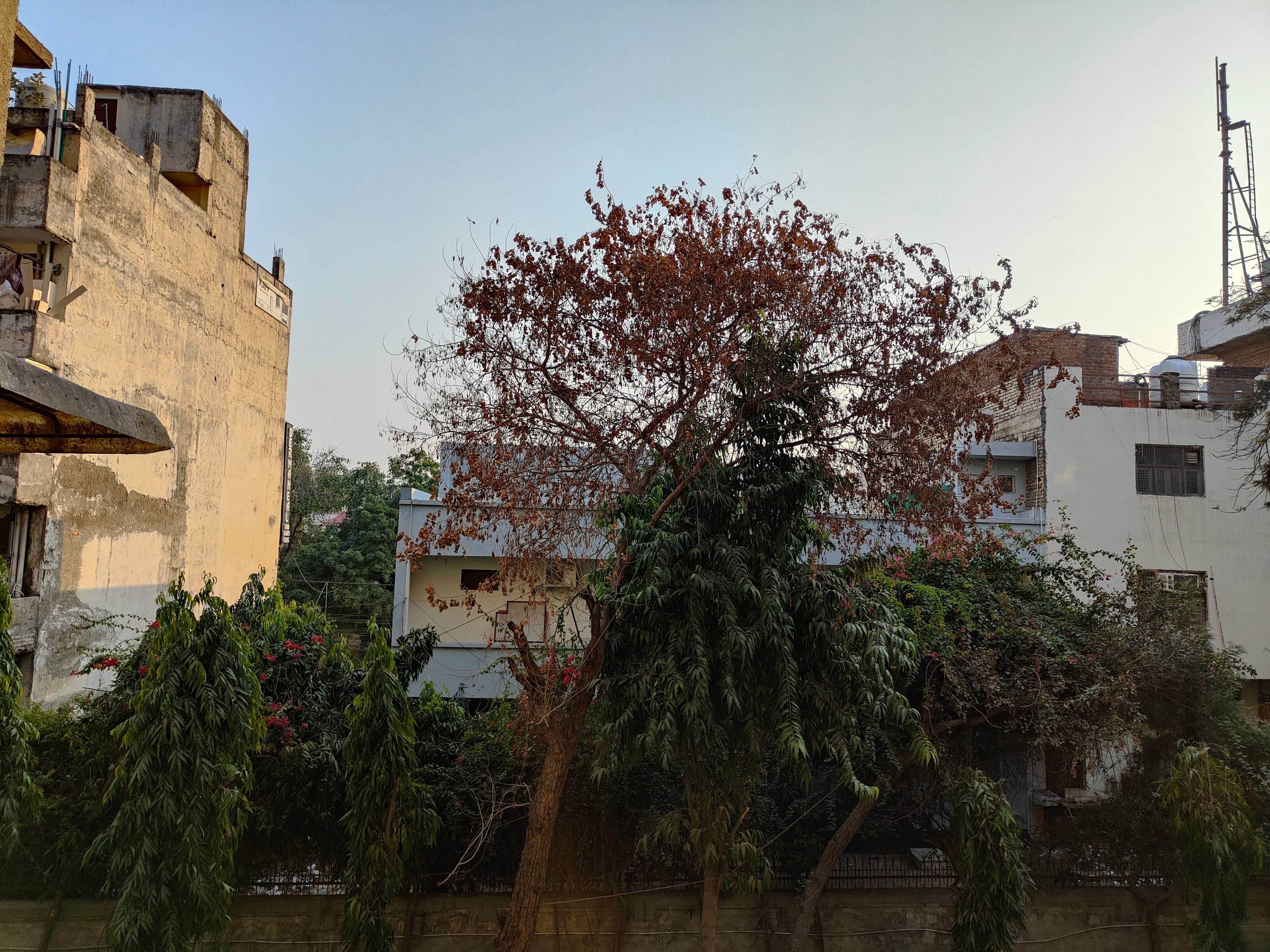
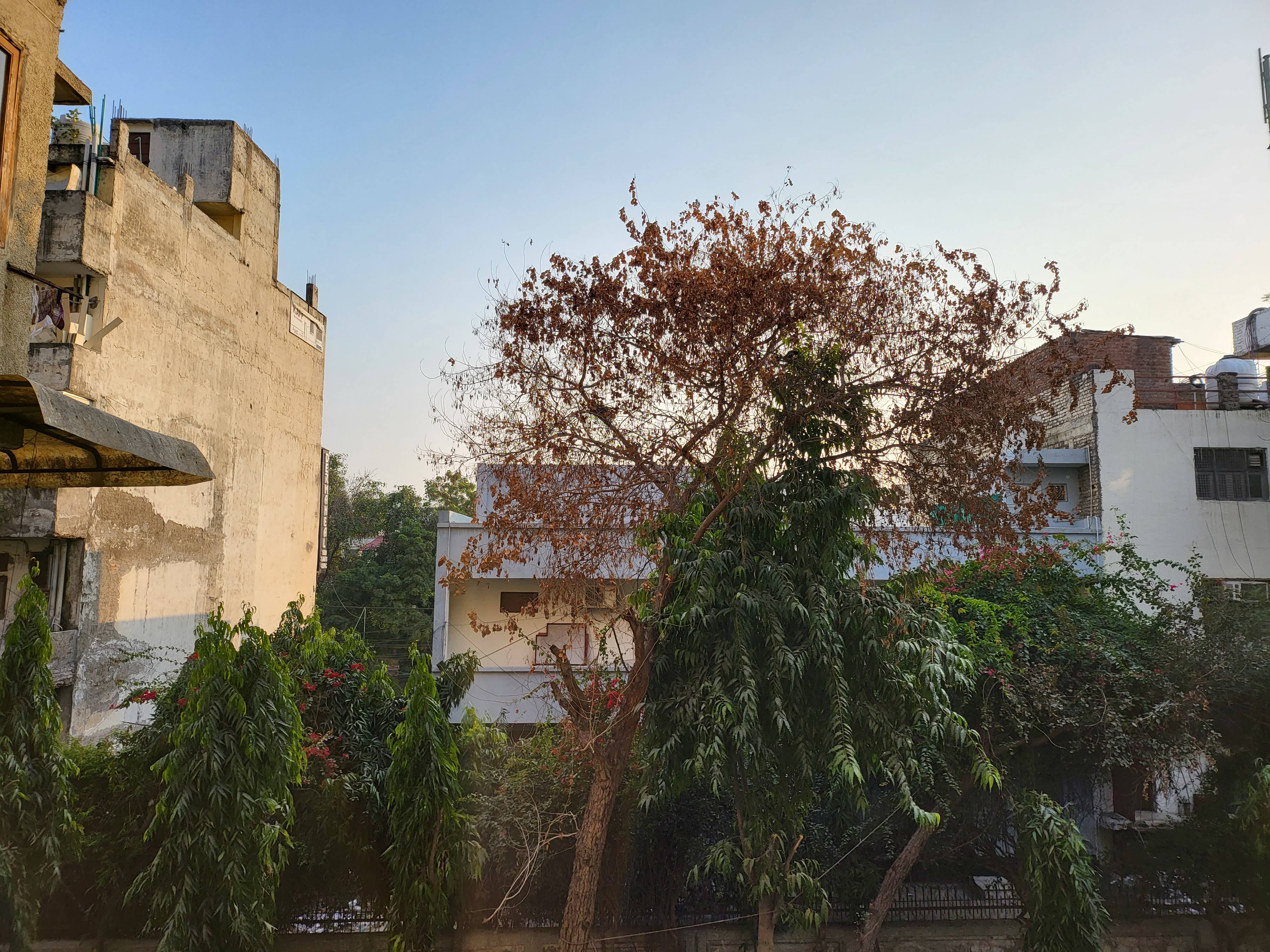
During my stint with the phones, I found their cameras to be mostly on par with one another. While the Find N’s primary sensor could retain more details, the unit’s colour science felt a bit off and the device would often go for a contrast-y look. On the other hand, the Fold3’s image processing was a tad less aggressive, although, at a closer crop, the phone would smoothen out the details of the subject.
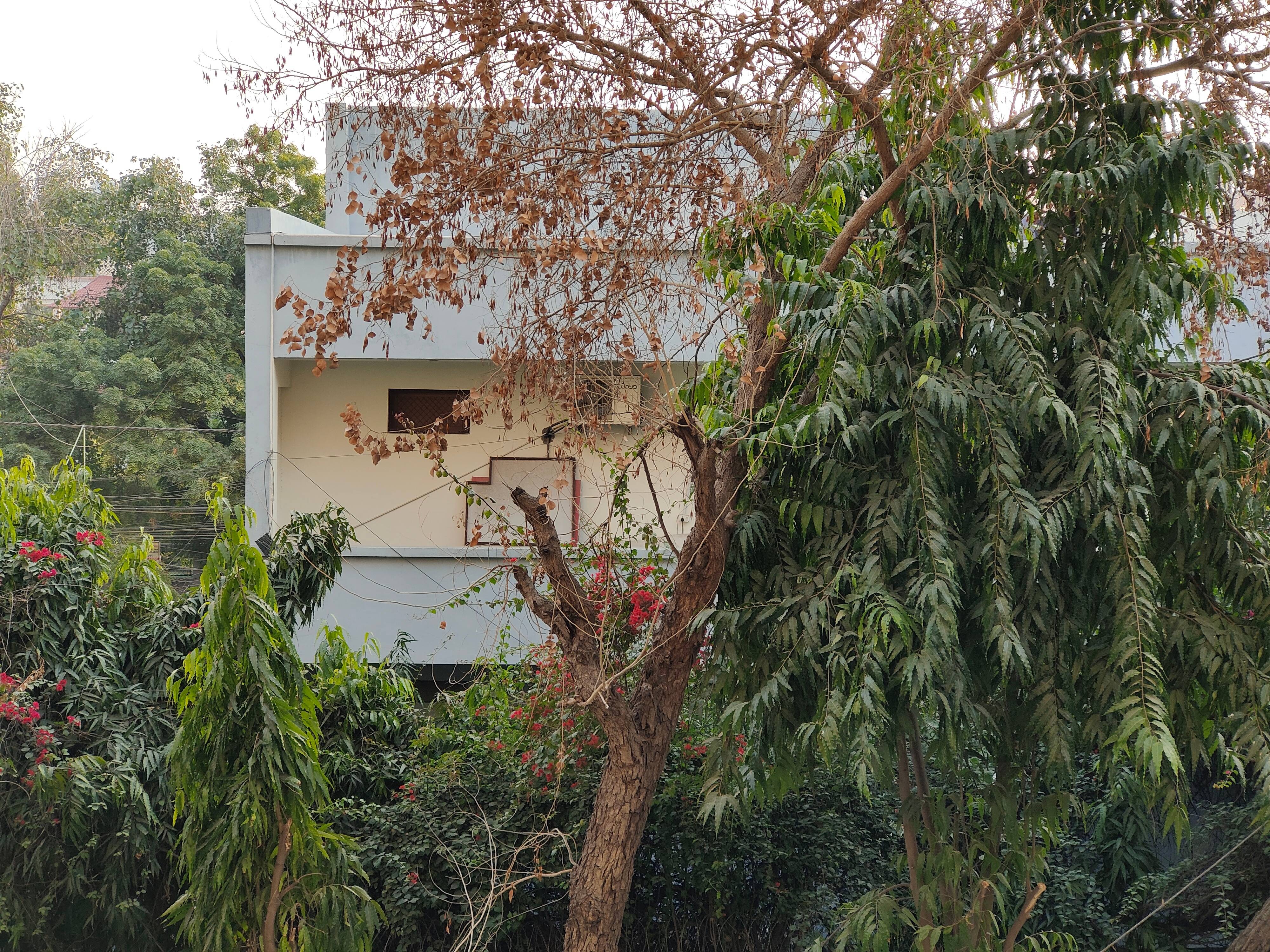
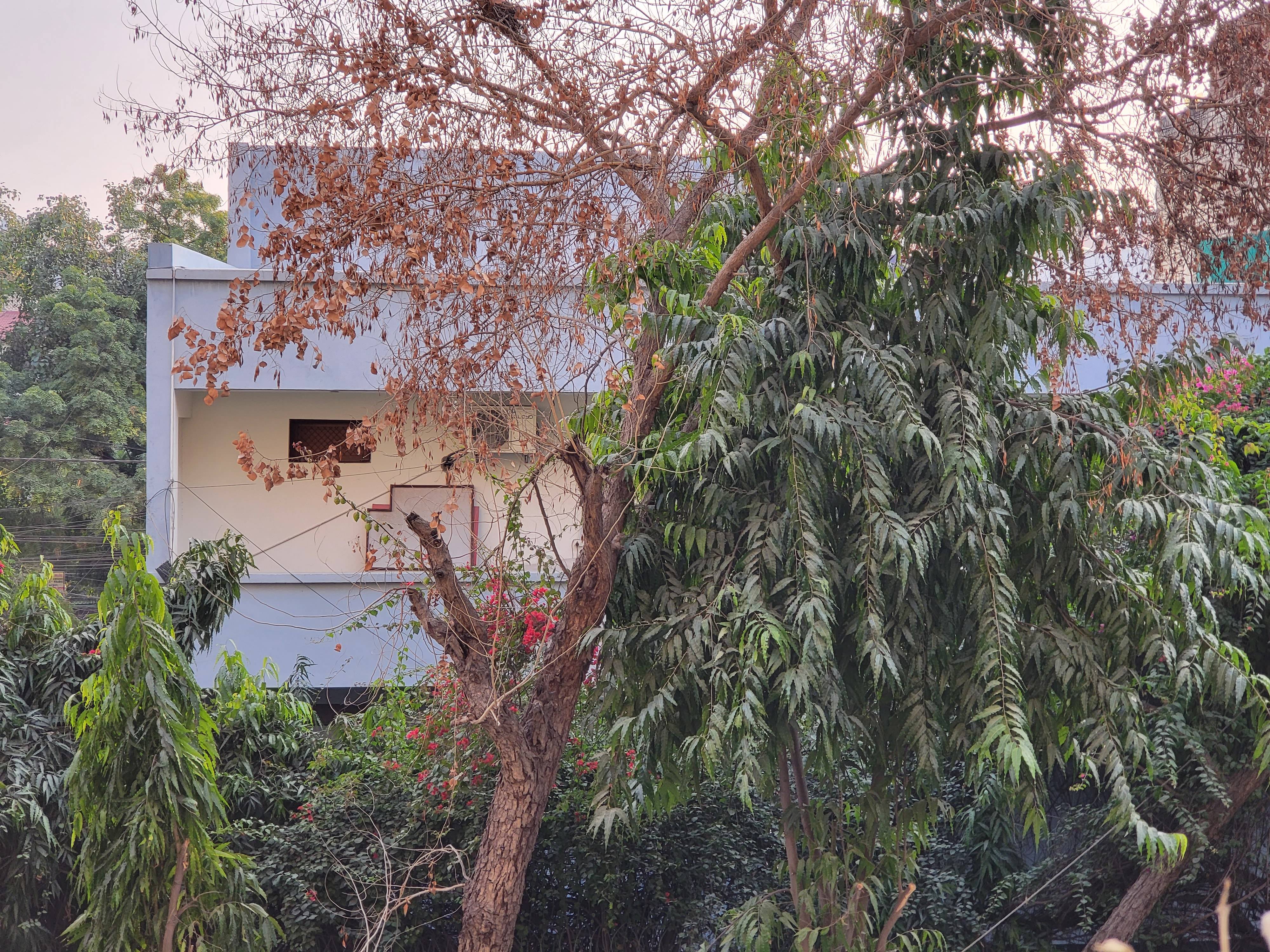
Shots snapped at 2x from both the devices offered serviceable details with good sharpness around the centre of the frame too. On the flip side, the ultra wide-angle images from the duo leave a lot to be desired. To wit, the phones struggled to keep objects towards the periphery of the frame in focus. As for closeups, I noticed that the Fold3 would latch on to the subject much quicker.


On the flip side, the selfies snapped from the Find N were in a league of their own and offered much better facial details than the Galaxy Z Fold3.
Performance and Software
When it comes to raw performance, both the devices are neck and neck. Spec-wise, both the foldables make use of Qualcomm’s flagship Snapdragon 888 processor and come toting UFS 3.1 storage as well as LPDDR5 memory. Ipso facto, you should be able to run pretty much any game on the phones at the best possible graphics and FPS settings. What’s more, I didn’t notice any app scaling issues on the phones either and be it BGMI or CoD Mobile, all my games scaled to the bigger displays on the foldables appropriately.
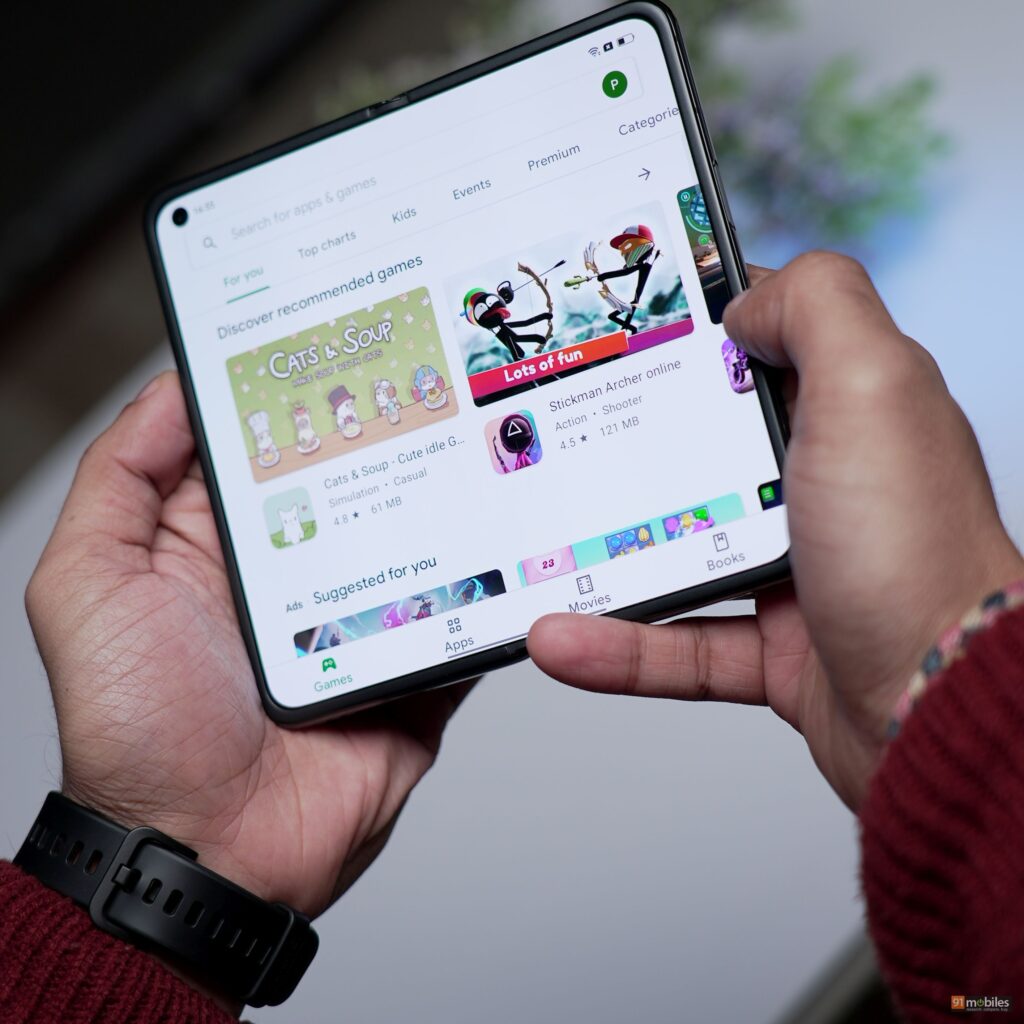
Software-wise, both the devices come with a treasure trove of nifty gestures and utilities geared towards maximising a user’s productivity. Take the Find N, for instance, which allows users to enter split-screen mode by swiping down with two fingers on the main display. The device also allows users to seamlessly transition any app from the inner display to the cover screen. So, if you’re watching something on YouTube, folding the Find N will give you an option to swipe up on the cover display, which would then transition the YouTube app to the smaller screen.

Of course, the Galaxy Z Fold3 is no slouch in the software department either and the device can also switch apps from the main screen to the cover screen without breaking a sweat. In fact, users can go into the phone’s display settings and tap ‘continue apps on cover screen’. From there, all you have to do is select all the apps you’d like to seamlessly transition from one display, to the other. Lest I forget, the device also touts S-pen support and even comes with the company’s DeX mode, which aside from being a handy desktop alternative, can also be used to transfer data from your phone to PC effortlessly.

Quite frankly, it’s quite difficult to objectively assess which phone offers a better set of software features – after all, your usage could drastically vary. With that said, both the companies deserve a pat on the back for optimising apps and providing a treasure trove of nifty tools for their respective bigger displays.
Verdict
It’s hard to fathom that the Find N is OPPO’s first foldable device. In fact, for its starting price of 7,699 Yuan or approximately Rs 92K, the smartphone grossly undercuts Samsung’s offering and despite that, offers a crease-less display, along with similar performance and camera chops. The Fold3 has quite a lot going for it too and the device does ship with a higher-res bigger screen and is IPX8 certified as well. That said, it’s remarkable how quickly OPPO has closed the gap (no pun intended) to Samsung.

As things stand, the Find N is only available in China and it’s anyone’s guess whether the device will see the light of the day in other markets. That said, the Find N is – at least in my books – a fantastic foldable and the device will surely ruffle some feathers in the foldable segment.
For all the latest Technology News Click Here
For the latest news and updates, follow us on Google News.
